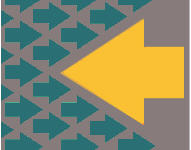by Fred Steinhauser, OMICRON electronics GmbH, Austria
Any customer can have a car painted any color he wants so long as it is black.
Henry Ford’s statement may sound somehow harsh today, but it is actually a dedication to customer benefit.

Comparisons with cars and the auto industry are often problematic because we tend to make extremely irrational and entirely emotional decisions when it comes to cars. But looking back a hundred years, Ford’s intention was to provide cars to as many customers as possible, priced as low as possible. .
To achieve this, he needed to exploit the economies of scale. This also meant to reduce variants as much as possible. Customers are mostly not aware what benefits this brings for them even beyond the price of the goods. The usage becomes unified, no need to get familiar with every similar, but somehow different product. There will be an abundance of replacement parts and the skills for maintenance and repair can be focused on a few products.
But today, we are faced with the opposite trend, everything must be individualized to the max. And it is us as customers who are willing to play this game and foster this trend. Why do we want commodities like mobile phones to have colors like pink, silver, or gold? Additionally, there are the many cases where we are pulled into a pointless variety without even noticing it in the first place. Have you ever tried to get the correct replacement battery for your wristwatch?
There were uproars from some concerned parties when the EU authorities took measures to unify the charging connector for phones. But this is how it has to be for the interest of the customers.
All this may sound somehow irrelevant to our professional lives as long we notice these habits only in the consumer market. But such tendencies are just as much present with industrial products and systems.
At my former employer who produced filter fabrics for papermaking, I was confused by product variants with thread counts that differed only by a percent or so. From an engineering standpoint, it was unlikely that this could make a significant difference for the process. As an electronics engineer, I was taught to work with component values according to the so-called “E series.” It is possible to design large portions of circuits with just the E6 series, where adjacent values are spaced by a factor of about 1.5. I wanted to bring in this kind of thinking for streamlining the portfolio. The production guys did somehow resonate to this idea, but the salespeople said that many customers were so convinced about “their” thread count, that the variants must remain.
We find this pattern also in the electrical power industry. After the fall of the iron curtain, we heard of ingenious solutions developed by east-German engineers, who made things work despite the sparse resources. But such custom solutions also need specialized knowledge for operation and maintenance, they should not be a role model.
When not squeezed by such restrictions, it is more beneficial to pick the next better products off the shelf and implement a standardized solution. Nevertheless, we still hear about custom solutions, told with pride.
Sometimes, customers ask for a simplified version of a product in an attempt to reduce costs and ease usage. But there is a real danger that this will backfire. The price reduction may be marginal, possibly less than the achievable discount on the standard product. At the vendors, there is a term for this: “additional charge for reduced features.” And once sold, the customized product will receive less care than the standard version.
Customers have the power to make vendors offer what customers ask for. We must not give this away by a lack of discipline when making buying decisions
Biography:

Fred Steinhauser studied Electrical Engineering at the Vienna University of Technology, where he obtained his diploma in 1986 and received a Dr. of Technical Sciences in 1991. He joined OMICRON and worked on several aspects of testing power system protection. Since 2000 he worked as a product manager with a focus on power utility communication. Since 2014 he is active within the Power Utility Communication business of OMICRON, focusing on Digital Substations and serving as an IEC 61850 expert. Fred is a member of WG10 in the TC57 of the IEC and contributes to IEC 61850. He is one of the main authors of the UCA Implementation Guideline for Sampled Values (9-2LE). Within TC95, he contributes to IEC 61850 related topics. As a member of CIGRÉ he is active within the scope of SC D2 and SC B5. He also contributed to the synchrophasor standard IEEE C37.118.








